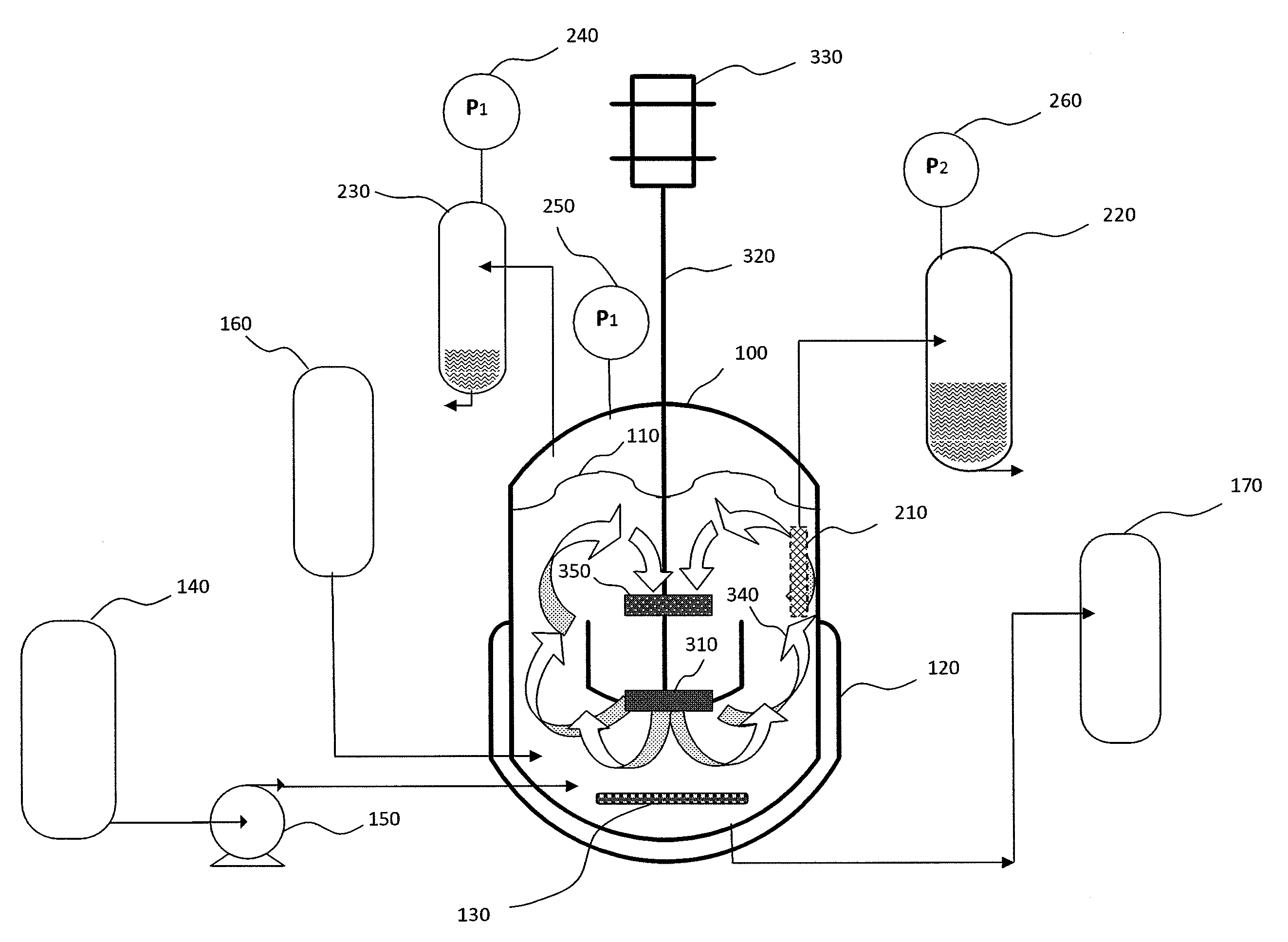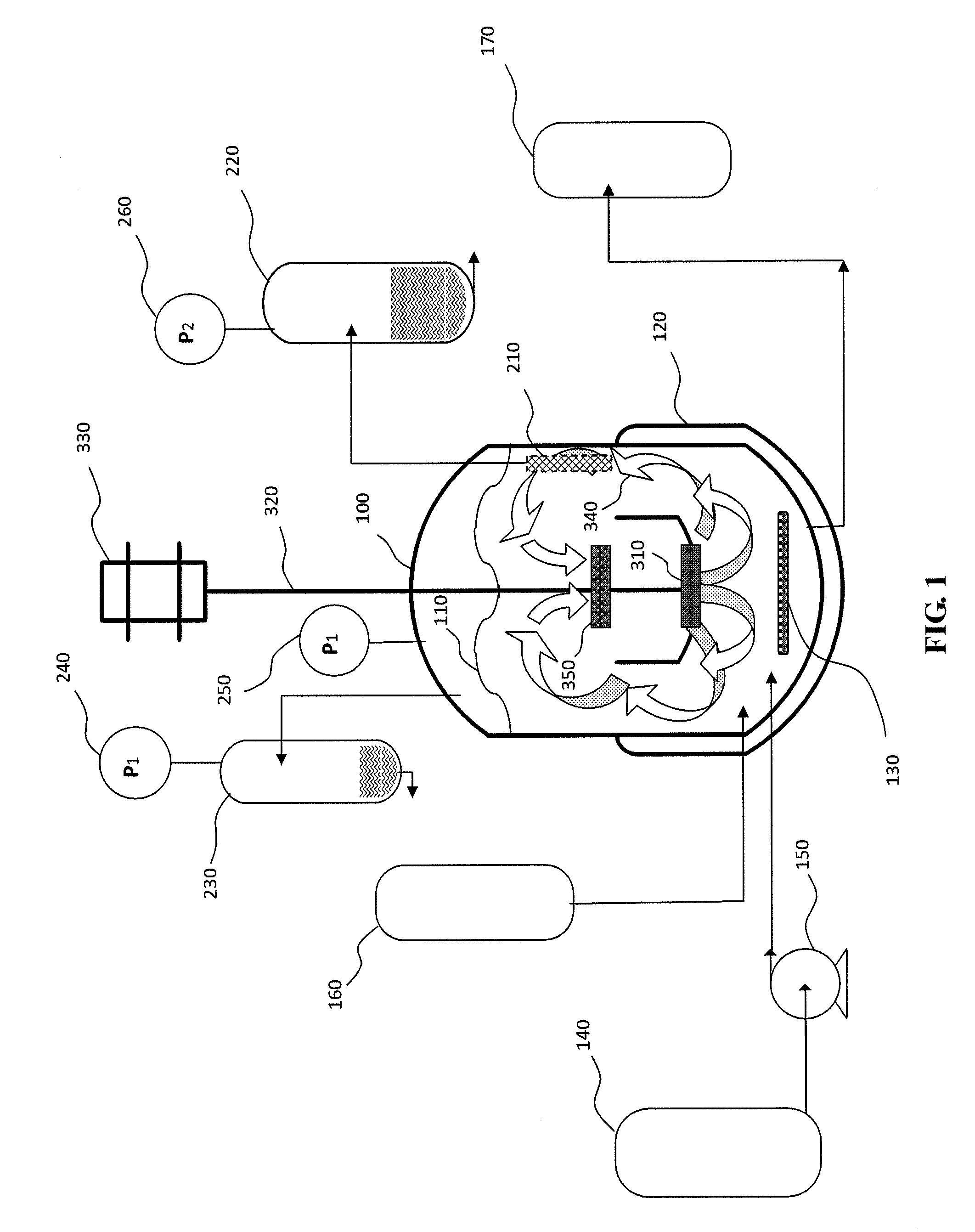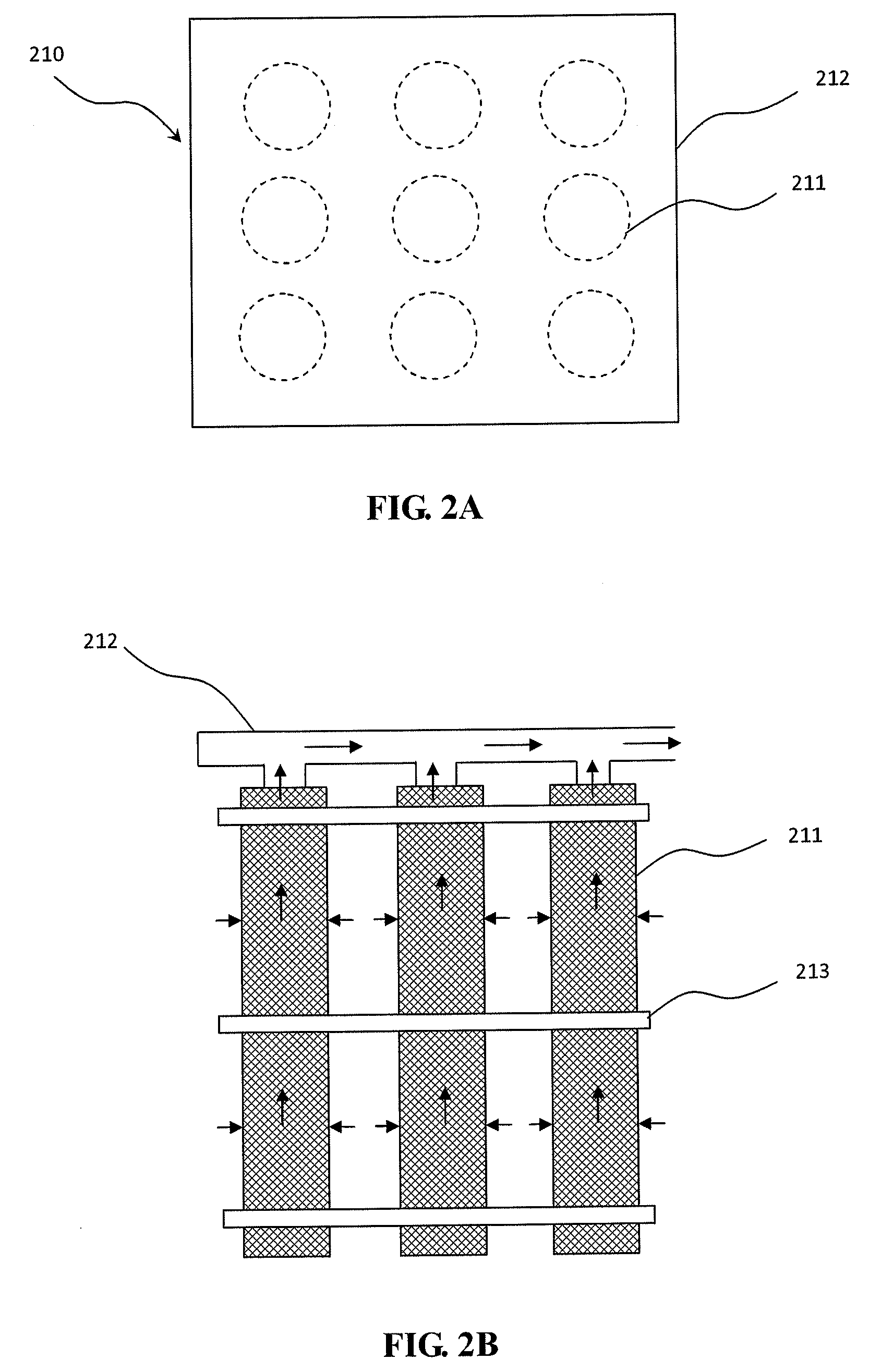Systems and Methods for Continuous Multiphase Reaction and Separation
- Summary
- Abstract
- Description
- Claims
- Application Information
AI Technical Summary
Benefits of technology
Problems solved by technology
Method used
Image
Examples
example 1
[0049]This Example illustrates the results of certain embodiments of the present invention as used in a continuous reaction / separation for sorbitol hydrogenolysis, the reactants of which include sorbitol and hydrogen gas. The conditions and results of 3 experiment setups, i.e., at laboratory scale, intermediate scale, and production scale for sorbitol hydrogenolysis are provided in the following Table 1. At the production scale, sorbitol hydrogenolysis was run for 6 months without interruption, during which time the temperature of the reaction system was kept stable, and no decreased efficiency of the separation device was observed. The pressure differential was kept substantially constant and the average catalyst activity and selectivity were also maintained substantially constant.
TABLE 1Conditions for sorbitol hydrogenolysisLaboratoryIntermediateProductionscaleScaleScaleVolume of the reaction vessel0.01730(m3)Total Surface Area of Separation0.004116~2060Devi...
example 2
Mixed Polyol Hydrogenolysis
[0050]In this Example, an intermediate scale experiment setup was employed, where the volume of the reaction vessel was 7 m3, and the aggregate surface area of the filters was 16.2 m2. The reaction / separation was run continuously for 132 days, but in three stages. In the first 40 days, the reactants were sorbitol and hydrogen gas; from Day 41 to Day 80, the liquid reactant was changed to mixed polyols including sorbitol and glycerol, as well as their dimers, trimers and tetramers. On Day 81, the liquid reactant was switched back to pure sorbitol, and the reaction was continued till the end of Day 132. During the course of the 132-day period, the flux across the separation device was maintained at a constant of 2.45 m3 / h, while the pressure differential was adjusted dynamically in the range of 0.20 bar to 0.40 bar to help maintain the constant flux. This constant flux roughly corresponded to the feeding rate of the liquid reactant(s) in the relevant stages....
PUM
| Property | Measurement | Unit |
|---|---|---|
| Time | aaaaa | aaaaa |
| Thickness | aaaaa | aaaaa |
| Pressure | aaaaa | aaaaa |
Abstract
Description
Claims
Application Information
 Login to View More
Login to View More - R&D
- Intellectual Property
- Life Sciences
- Materials
- Tech Scout
- Unparalleled Data Quality
- Higher Quality Content
- 60% Fewer Hallucinations
Browse by: Latest US Patents, China's latest patents, Technical Efficacy Thesaurus, Application Domain, Technology Topic, Popular Technical Reports.
© 2025 PatSnap. All rights reserved.Legal|Privacy policy|Modern Slavery Act Transparency Statement|Sitemap|About US| Contact US: help@patsnap.com



